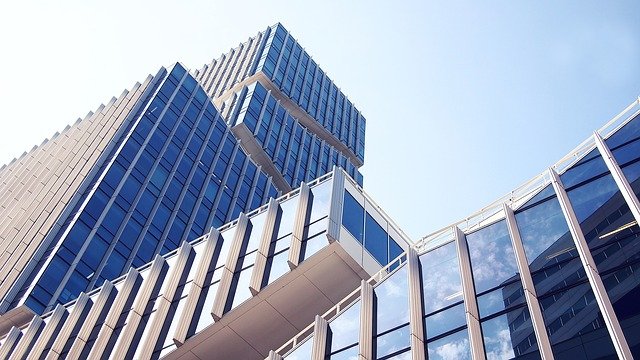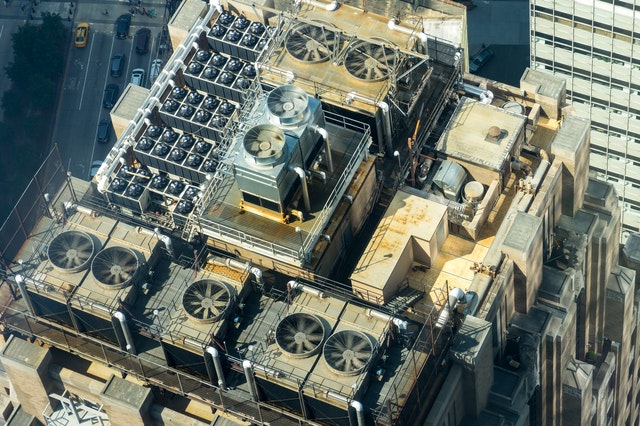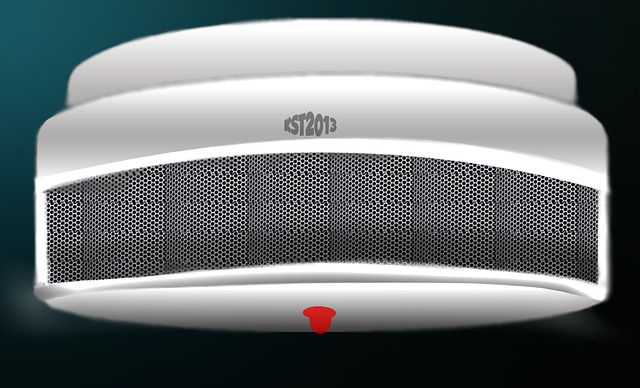Are you tired of breaking a sweat just thinking about the cleanliness of your gym?…
Summer Maintenance Checklist for Commercial Buildings

Summer is finally here! Hot and sunny days await, but for commercial property owners, there is no time to relax. Running a business largely depends on the condition of corporate property. With that in mind, let’s take a look at the summer maintenance checklist for commercial buildings.
The Importance of Preventative Maintenance
We are looking at the maintenance checklist because preventative maintenance plays a crucial role here. Taking proactive steps is more efficient than waiting for a problem to occur so you could fix it.
Our maintenance checklist includes:
- HVAC System
- Building Roof
- Plumbing
- Electrical Installation
- Lighting
- COVID-19 Safety Measures
- Safety Equipment
Let’s go through each of these points individually.
Checking HVAC System
Even though checking the HVAC system is something you should do regularly, it is even more important to do it in preparation for summer days. Due to hot weather, AC units will work 24/7, so the chances of something breaking will go up.

Furthermore, it is crucial to check the HVAC system because of airflow and the quality of air. Especially now, when the pandemic is still active, it is essential to clean or replace filters regularly.
Inspect Building Roof For Any Damage
Since we can expect sudden and quick rains during the summer, the building roof must be completely damage-free. Otherwise, you will have a leaking rook that will create an unhealthy work environment and possibly jeopardize the structure of the building. Furthermore, if the water touches electrical installations, it can cause a fire. Thus, check the rook for damage now, so you don’t regret it later.
Plumbing Inspection
Hot days mean that water usage will increase. Plumbing installations on your commercial property need to work perfectly. Check the outside of the building to see if there is any wet soil. That could be an indication of a broken pipe. If there has been a shift in the soil due to temperature changes, it can also cause broken pipes in your sewer system, especially if it has lateral lines.
Furthermore, check if the fire prevention sprinklers inside the building work as intended. That is one of the most critical safety regulations.
Checking Electrical Installations
Electrical installations are usually good, especially if it’s a new building. Nevertheless, it is important to check if everything is functional. Do not allow a minor electrical problem to become a larger one. Regular maintenance is a must.
Keep in mind that corporate buildings use a lot of electricity. Issues like flickering or dimming lights, bulbs burning out, or tripping breakers are pretty common. Another reason why you need electrical installations to work as intended is that your business does not suffer. A power outage means no network, and that means no business.
Lighting Fixtures
As mentioned, lighting issues are common because of electricity consumption. That’s why we want to outline the importance of checking lighting fixtures more often. Flickering lights mean there is a bad wiring problem somewhere, and that could turn into a fire.
Consider switching to a low-voltage LED bulbs. Not only will you reduce electricity consumption and prevent potential issues, but your electricity bill will be lower.
Check If Your Commercial Property Complies With The Latest COVID-19 Safety Measures
Every commercial property needs to follow extensive safety measures regarding the COVID-19 pandemic.
As a part of your summer maintenance checklist for commercial buildings, check if all mechanical and safety systems are operational. Furthermore, get rid of any mold growth or issues with pests or rodents.
We have already mentioned that your HVAC system needs to work without any issues. The idea is to increase the circulation of outdoor air. All windows need to go through the proper maintenance, so there are no jams anywhere. Furthermore, check if all fans are working correctly.

Pay special attention to rooms where employees regularly meet, like meeting rooms, lunch area, lockers, check-in or waiting areas for clients, and so on.
If you have contractors working on property maintenance, it is crucial to communicate all the rules and ensure that everyone follows safety measures.
Another requirement is to modify all offices. Introduce separators between employees, and create more space between seating areas. If you have a lot of equipment, you can free up some space by renting a commercial storage unit. Storage will make things easier because you can safely store any unnecessary furniture or equipment that will not be used at the moment.
Make sure that hand sanitizers are placed everywhere, and mark entrance and exit points for employees and clients.
Safety Equipment
Finally, the last on the summer maintenance checklist for commercial buildings is ensuring that all safety equipment works well. We have already mentioned the sprinklers, but if you have any other fire suppression system, that needs to be checked as well. Furthermore, check smoke detectors, emergency lights, emergency broadcasting system, and all emergency exits. There doors operate on sensors, so it is wise to perform a safety exercise to be sure that everything is operational.

If any exits leads to the fire escape stairs, do a check-up and see if everything is in order.
Summer Maintenance Checklist for Commercial Buildings Explained
As you can see, this summer maintenance checklist for commercial buildings is not a short one. However, it is crucial to check every point and make sure that everything is operational. Things tend to break more often during summer because of the increase in temperature. With that in mind, it is better to be safe than sorry. Remember, a preventative approach is always better than fixing the issue.
